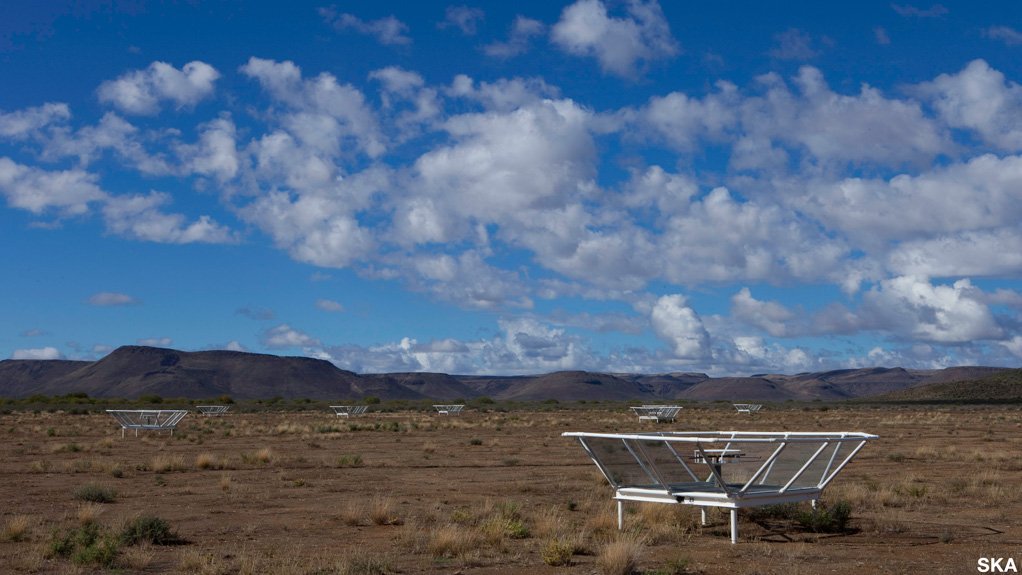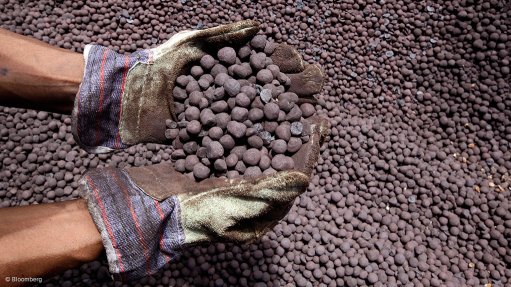SKA dips into global pool of talent for design teams
The teams of experts responsible for designing the intricacies of the Square Kilometre Array (SKA) project were announced on Monday.
More than 350 scientists and engineers from 18 countries – divided into several groupings – would undertake the €120-million critical, detailed design phase of the world’s largest radio telescope.
“These multidisciplinary teams of experts have three full years to come up with the best technological solutions for the final design of the telescope, so we can start tendering for construction of the first phase in 2017 as planned, " SKA chairperson Professor John Womersley said on Monday.
The design phase was broken down into several work packages to be undertaken by selected consortia focused on specific elements of the SKA project.
Australia-based Commonwealth Scientific and Industrial Research Organisation’s (CSIRO's) Dr Mark McKinnon would lead the team tasked with designing the dish, which included procurement, planning for the manufacturing of all components, the shipment and installation of each dish on site, feeds and other components, and acceptance testing.
Jan Geralt Bij de Vaate of the Netherlands Institute for Radio Astronomy, or Astron, would head the team responsible for the design of the Low Frequency Aperture Array (LFAA) and the Mid-Frequency Aperture Array – two separate work packages comprising the design of a set of antennas, onboard amplifiers and local processing required for the aperture array telescope of the SKA.
The Telescope Manager consortium, led by India-based National Centre for Radio Astrophysics’s Professor Yashwant Gupta, was tasked with the monitoring element of the entire telescope, as well as the engineering and operational status of its component parts.
The Science Data Processor (SDP) consortium would focus on the design of the computing hardware platforms, software and algorithms needed to process science data – which would exceed that of the entire global Internet traffic data – from the correlator or nonimaging processor into science data products.
The SDP consortium would be led by University of Cambridge Professor Paul Alexander, while the National Research Council of Canada’s David Loop would head the consortium designing the Central Signal Processor (CSP) – the central processing "brain" of the SKA.
The CSP would convert digitised astronomical signals detected by SKA receivers into the vital information needed by the SDP to make detailed images of deep space astronomical phenomena that the SKA would be observing.
The Signal and Data Transport consortium – led by University of Manchester Professor Richard Schilizzi – was responsible for the design of three data-transport networks, including the digital data backhaul, transporting signals from the radio telescopes to the CSP, as well as data products from the CSP to the SDP and from the SDP to the regional SKA data centres.
SKA South Africa’s Dr Richard Lord would head up the team responsible for the assembly integration and verification element of the project.
This meant planning all activities at the remote sites that were necessary to incorporate the elements of the SKA into existing infrastructures.
The infrastructure demands of the SKA required two consortia, each managing their respective local sites in Australia and Africa.
INFRA-AUS, led by the CSIRO’s Dr Michelle Storey, and INFRA-S, headed by SKA South Africa’s Tracy Cheetham, would “take care” of all SKA infrastructure on continent-wide scales.
This would include all work undertaken to deploy and operate the SKA in both countries, such as the construction of roads, buildings, power generation and distribution infrastructure and reticulation, and the procurement of vehicles, cranes and specialist equipment needed for maintenance activities not included in the supply of the other elements.
Lastly, the design of the Wideband Single Pixel Feeds, led by Sweden-based Chalmers University Professor John Conway, comprised the activities necessary to develop a broadband spectrum single pixel feed for the SKA.
Comments
Press Office
Announcements
What's On
Subscribe to improve your user experience...
Option 1 (equivalent of R125 a month):
Receive a weekly copy of Creamer Media's Engineering News & Mining Weekly magazine
(print copy for those in South Africa and e-magazine for those outside of South Africa)
Receive daily email newsletters
Access to full search results
Access archive of magazine back copies
Access to Projects in Progress
Access to ONE Research Report of your choice in PDF format
Option 2 (equivalent of R375 a month):
All benefits from Option 1
PLUS
Access to Creamer Media's Research Channel Africa for ALL Research Reports, in PDF format, on various industrial and mining sectors
including Electricity; Water; Energy Transition; Hydrogen; Roads, Rail and Ports; Coal; Gold; Platinum; Battery Metals; etc.
Already a subscriber?
Forgotten your password?
Receive weekly copy of Creamer Media's Engineering News & Mining Weekly magazine (print copy for those in South Africa and e-magazine for those outside of South Africa)
➕
Recieve daily email newsletters
➕
Access to full search results
➕
Access archive of magazine back copies
➕
Access to Projects in Progress
➕
Access to ONE Research Report of your choice in PDF format
RESEARCH CHANNEL AFRICA
R4500 (equivalent of R375 a month)
SUBSCRIBEAll benefits from Option 1
➕
Access to Creamer Media's Research Channel Africa for ALL Research Reports on various industrial and mining sectors, in PDF format, including on:
Electricity
➕
Water
➕
Energy Transition
➕
Hydrogen
➕
Roads, Rail and Ports
➕
Coal
➕
Gold
➕
Platinum
➕
Battery Metals
➕
etc.
Receive all benefits from Option 1 or Option 2 delivered to numerous people at your company
➕
Multiple User names and Passwords for simultaneous log-ins
➕
Intranet integration access to all in your organisation























